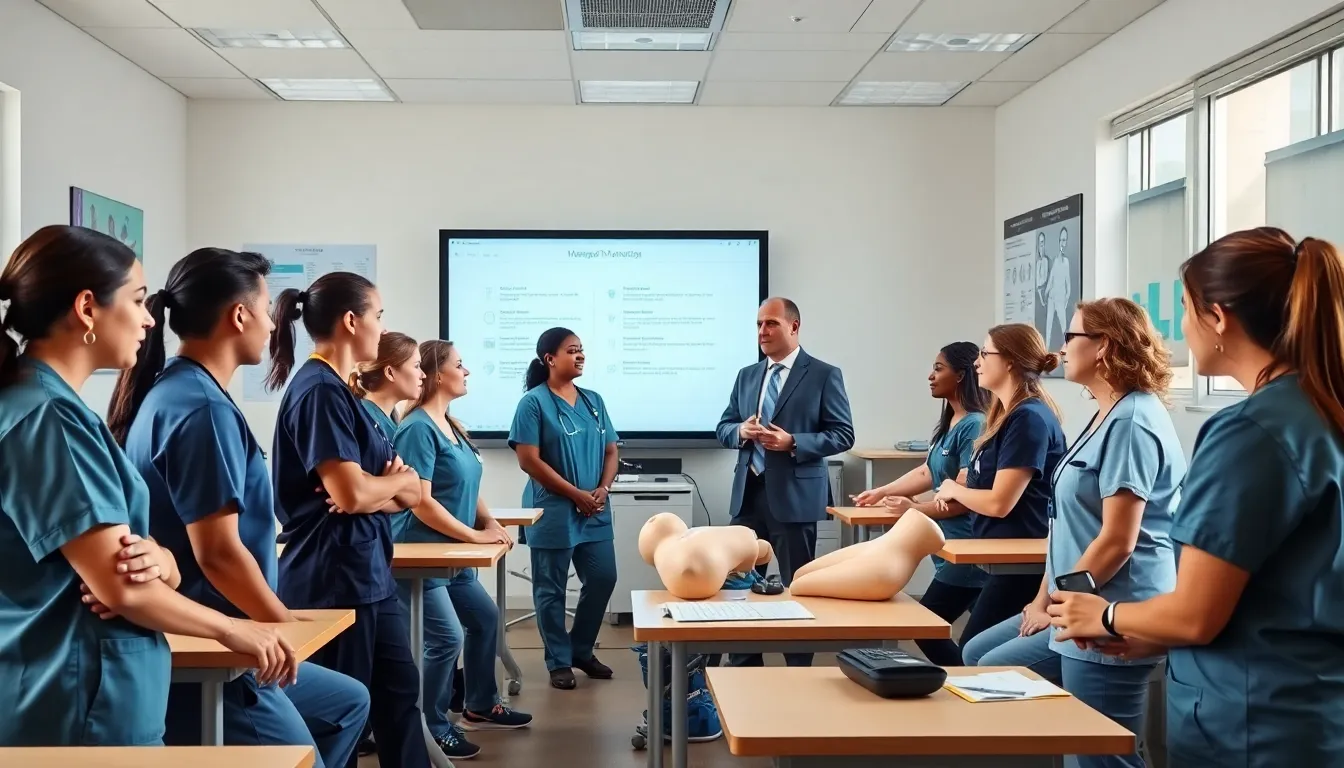In a world where healthcare is changing faster than a speeding bullet, understanding nurse education today is more vital than ever. It’s not just about memorizing medications and anatomy: it’s about preparing tomorrow’s heroes of healthcare with an education that keeps pace with innovation. So, grab a cup of coffee (or something stronger) and let’s jump into the fascinating evolution shaping today’s nursing programs. Spoiler alert: It’s not all textbooks and late-night study sessions.
Table of Contents
ToggleThe Evolution of Nurse Education

Historical Overview of Nursing Education
The journey of nurse education is rich and varied, rooted in centuries of development. In the 19th century, nursing was seen more as a domestic skill than a profession. The arrival of Florence Nightingale changed that perspective drastically, transforming nursing from shadowy backgrounds to a respected career path. Nightingale introduced formal training through structured programs, with an emphasis on cleanliness and patient care.
Fast forward to the 20th century, and nursing education began to shift again. Programs expanded to include academic courses, clinical training, and hands-on experiences in diverse healthcare settings. By the time the 21st century rolled around, nurse education had evolved into a formalized system, complete with associate’s, bachelor’s, and advanced practice degrees, allowing nurses to broaden their skills and opportunities. Today, nurse education is more than just training: it’s a comprehensive framework designed to educate skilled practitioners who are crucial to healthcare teams.
Contemporary Trends in Nursing Programs
Integration of Technology in Nurse Training
In the age of smartphones and telehealth, technology has become an integral part of nurse education. Schools are now equipping students with cutting-edge tools, from virtual simulations to advanced data management systems. Imagine practicing complex procedures on a high-tech mannequin that bleeds and responds just like a real patient. This immersion in technology not only enhances learning but also builds confidence for clinical practice. If nurses didn’t seriously believe in tech, they wouldn’t be at the forefront of telehealth services today.
Simulation and Clinical Practice
Simulation labs are the new playgrounds for nursing students. These spaces offer a safe environment where they can practice skills and make mistakes without risking patient safety. The real-world experiences provided via simulation are invaluable, allowing students to experience high-pressure situations and develop critical thinking skills. As employers increasingly seek competent, confident graduates, these training methods prepare future nurses to tackle challenges head-on.
The Role of Continuing Education and Professional Development
Importance of Lifelong Learning in Nursing
Nursing isn’t just a career: it’s a path of continuous education. In a field where medical knowledge is constantly evolving, a nurse’s education never truly ends. Lifelong learning is critical for staying abreast of new practices, technologies, and research findings. From attending workshops to taking online courses, nurses are expected to adapt and grow throughout their careers.
Certifications and Advanced Degrees
Further, advanced degrees and certifications are becoming paramount in advancing one’s nursing career. Many institutions now offer specialized certifications that build expertise in areas such as pediatrics, emergency care, or critical care. These qualifications not only enhance career prospects but also improve patient care, underscoring nurses’ pivotal roles within healthcare teams.
Challenges Facing Nurse Education Today
Workforce Shortages and Their Impact
Even though the growing demand for healthcare services, nurse education faces significant challenges, chief among them being workforce shortages. As the baby boomer generation retires, the gap between available positions and qualified candidates is widening. This shortage impacts classroom sizes, clinical placements, and the quality of education. Worse yet, it puts immense pressure on existing nursing staff, leading to increased burnout and attrition.
Addressing Diversity and Inclusion in Nursing Education
The need for diversity in nursing education is critical. As demographics shift, the nursing workforce must reflect the communities it serves. Schools and organizations are actively working to address diversity and inclusion, creating programs aimed at recruiting underrepresented groups. The goal is simple: a diverse workforce leads to better patient outcomes by fostering understanding and empathy across cultural lines.
Future Directions in Nurse Education
Innovative Teaching Strategies
Looking forward, innovative teaching strategies are shaping the future of nurse education. Institutions are increasingly embracing blended learning, integrating online platforms with in-person classes. Interactive online modules, virtual classrooms, and collaborative projects encourage flexibility and engagement in learning. Having options like this helps cater to varied learning styles, ensuring a more competent nurse workforce.
Forecasting the Future Workforce Needs
Finally, understanding the future needs of the workforce is paramount for educational institutions. Using data analytics, schools can predict areas where nursing roles will be needed most and adapt their curricula accordingly. Whether it’s preparing nurses to handle emerging public health crises or equipping them with skills to work in telehealth systems, forward-thinking models are essential for staying ahead.





